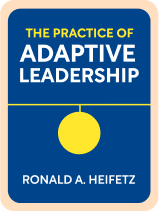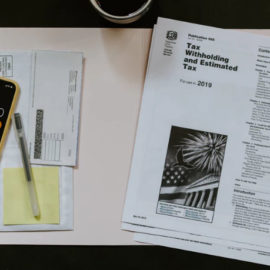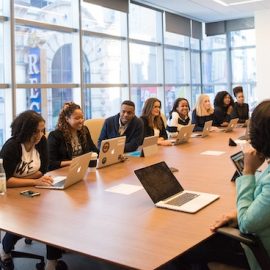

This article is an excerpt from the Shortform book guide to "The Practice of Adaptive Leadership" by Ronald A. Heifetz. Shortform has the world's best summaries and analyses of books you should be reading.
Like this article? Sign up for a free trial here .
What are adaptive challenges? How do you diagnose when your organization is facing one?
In the context of leadership, adaptive challenges are problems with unknown solutions which, by definition, require a fundamental change in order to be solved. There are two steps to solving such challenges: 1) diagnosis, and 2) treatment.
Keep reading to learn how to identify adaptive challenges, and how to address them.
Assess the Challenge
There’s a three-step process for assessing adaptive challenges:
Step #1: Become Aware of the Major Pitfalls of Misdiagnosing Adaptive Problems
As we learned in Part 1, there are two types of problems: technical, which have known solutions, and adaptive, which don’t yet have solutions. The most common reason change initiatives fail is because they attempt to apply a technical solution to an adaptive problem.
There are two main reasons people misdiagnose adaptive challenges as technical problems:
Reason #1: Most problems have both technical and adaptive elements, and it’s not always to tell which are which.
- (Shortform example: Company X’s adaptive challenge is a lack of women in its workforce. Some parts of this problem, such as how to attract applicants from unexplored talent pools, are adaptive. Other parts, such as how to formally make female candidates attractive job offers (by offering perks and so on), have known solutions and are technical. Still, other parts, such as writing the job posts, could be adaptive or technical—are the existing workflows somehow contributing to a lack of applications from women?)
Reason #2: Technical solutions are easier, are less disruptive, and involve less emotional strife than adaptive solutions, so people are predisposed to misdiagnoses.
Step #2: Determine the Problem Type
There are two questions to ask yourself when determining whether you’re facing a technical problem or an adaptive challenge:
Question #1: Does the Problem Fall Into Any of the Adaptive Problem Archetypes?
Check if the problem falls into any of the four common adaptive problem archetypes:
Archetype #1: Contradiction Between Words and Actions
A contradiction between words and actions is a gap between what a person or organization claims to value and what she or it actually does.
- For example, during the civil rights movement, many Americans spoke about valuing equal opportunity but didn’t challenge segregation when they encountered it in daily life. It took Martin Luther King’s “I have a dream” speech to force them to see the contradiction between their values and actions and to acknowledge that they would have to change to close the gap.
Archetype #2: Conflicting Priorities
This archetype is the presence of conflicting priorities—in other words, mutually exclusive commitments.
- For example, a start-up might need employees to work long hours to get off the ground but also value its employees’ work-life balance and want them to be able to go home and spend time with their families. It’s not possible for employees to both work long hours and go home early, so the priorities conflict.
Archetype #3: Filtering
Filtering is when people keep their potentially inflammatory thoughts and impressions to themselves and only say safe things aloud, such as polite banter. For example, employees may only bring up ideas they know their boss will agree with, instead of ideas they think will be most helpful to the business. People keep quiet because bringing up problems can make them unpopular, create conflict, or even get them fired. They especially keep quiet in front of senior leaders.
Archetype #4: Work Avoidance
Work avoidance is when people invent ways to avoid making uncomfortable changes. Sometimes, it’s easier to see work avoidance techniques than an adaptive problem, so if you notice them, you can work backward to figure out what the problem is.
There are two main work avoidance strategies:
1. Distraction. Distracting encompasses the following actions:
- Acknowledging only the technical parts of a problem and using technical solutions
- Acknowledging only the part of the problem that you can address with your current knowledge
- Discussing a different problem
- De-escalating tension in a meeting by calling for a break or using humor
- Refusing to acknowledge the existence of the problem
- Refusing to acknowledge certain options that are too newfangled
2. Abdicating responsibility. This involves:
- Blaming the problem on a scapegoat or an external enemy
- Shooting the messenger—putting the attention on whoever’s delivering the message instead of on the problem
- Blaming authority
- Assigning adaptive work to people who don’t have the authority or ability to actually complete it
Question #2: Are Any Adaptive Indicators Present?
There are several indicators that suggest a problem is adaptive:
- People complain, which indicates there’s a gap between where people want to be and where they are now.
- People are frustrated and fail more often. This indicates that they need to learn and adapt.
- People who have successfully solved problems in the past, especially authority figures, can’t seem to fix this one.
- The problem takes a long time to solve or resurfaces.
- Fixes that have worked in the past don’t have any effect anymore.
- People come up with the following shallow interpretations:
- They can describe the problem in detail but not their own role in it.
- They think their coworkers are the source of the problem—if everyone did their work properly, there wouldn’t be a problem.
- The problem is so huge and noble that failure wouldn’t be surprising.
- The problem is already fixed.
- People start wanting to try something new.
Step #3: Articulate the Challenge
Once you’ve determined that you’re dealing with an adaptive challenge and not a technical problem, ask yourself the following questions to get a handle on the scope of the problem:
1) What group is facing the challenge?
2) What is the mission of that group?
3) Is the challenge based on external changes (for example, changing market conditions) or internal changes (for example, changing company values)?
4) What do I think and assume about the challenge? Are my assumptions limiting me?
5) What is my role in the organization, how much authority do I have, and what resources are available to me?
6) What fixes have I tried, and how did they work? What fixes have I thought of that I haven’t tried, and why haven’t I tried them? What fixes am I avoiding even thinking about?
7) Who is affected by or invested in the challenge and what do they think about it?
8) Where are people running into conflict? Do they disagree about the mission or values of the group, or about the strategy and goals, or about tasks? To determine where the conflicts are, gather all the interested parties and start the discussion at the highest level of abstraction—mission and values. Probably, all of the parties agree with the mission. Then, ask what the parties would have to do to achieve the mission and values. If you don’t find a conflict here, keep asking what the parties would have to do to achieve the step you’ve just covered until you find a conflict.

———End of Preview———
Like what you just read? Read the rest of the world's best book summary and analysis of Ronald A. Heifetz's "The Practice of Adaptive Leadership" at Shortform .
Here's what you'll find in our full The Practice of Adaptive Leadership summary :
- How to deal with unknown solutions that require innovation, experimentation, and adaptation
- How to determine if a problem is technical or adaptive
- Five tips for launching initiatives to address adaptive challenges






